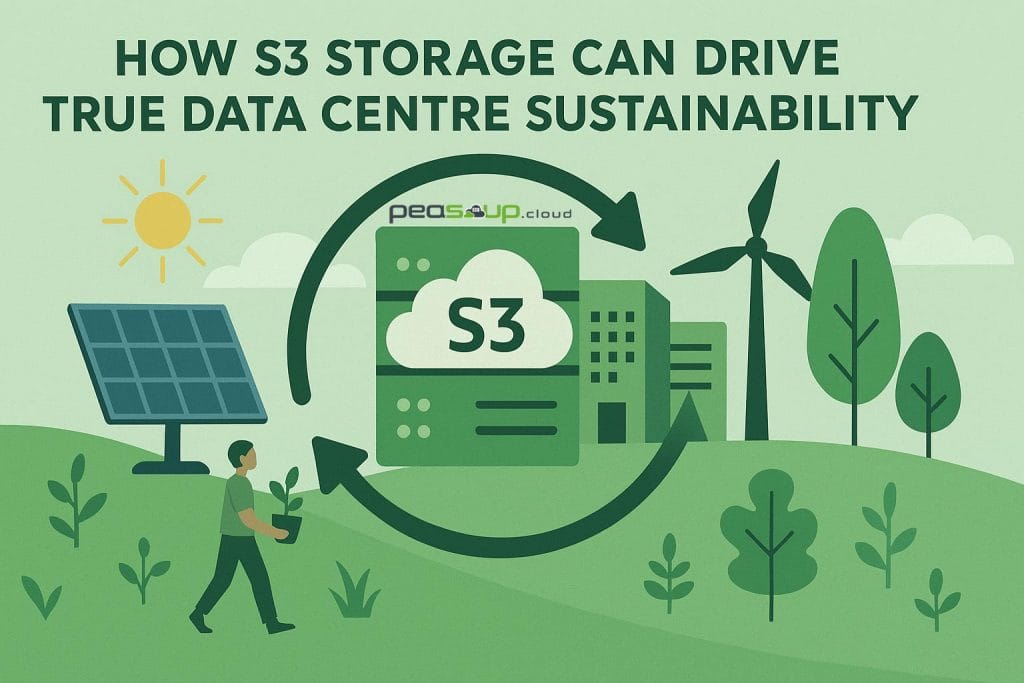How S3 Storage Can Drive True Data Centre Sustainability
Beyond Compatibility - How S3 Storage Can Drive True Data Centre Sustainability
In the race to modernise infrastructure and curb environmental impact, S3-compatible storage has become a go-to solution for cloud-native and hybrid environments. Known for its scalability, flexibility, and seamless integration with cloud services, S3-compatible object storage has reshaped how data is stored and accessed. But while its technical strengths are widely celebrated, its potential as a sustainability enabler is often overlooked or misunderstood.
What Is S3-Compatible Storage?
At its core, S3-compatible storage mimics the API of Amazon’s Simple Storage Service, allowing organisations to build cloud-native apps and manage unstructured data across multiple environments — on-prem, hybrid, and multi-cloud — with consistency. It supports features like versioning, lifecycle rules, and replication, giving businesses fine-grained control over their data.
But these benefits don’t inherently make a data centre green. The key lies in how S3 storage is deployed and managed.
S3 Storage as a Sustainability Enabler
S3-compatible systems offer sustainability advantages that are often underleveraged. Here’s how they can contribute to a greener data strategy:
- Smarter Data Lifecycle Management
One of the core strengths of S3-compatible platforms is lifecycle management. Organisations can define policies that automatically move infrequently accessed data to lower-cost, lower-power storage classes, or delete it altogether after a set period. This reduces unnecessary data sprawl, cutting down on energy use and storage costs.
Without such policies, companies may store petabytes of unused data indefinitely, wasting both power and capacity.
- Efficient Use of Resources
S3-compatible storage abstracts the physical layer, making it easier to centralise and optimise data placement across diverse hardware. This opens the door to pairing efficient, low-power storage appliances with software-defined storage — a more energy-conscious choice than traditional silos with underutilised capacity.
- Supports Hybrid and Edge Strategies
Instead of replicating data across multiple full-stack infrastructures, S3-compatible solutions can allow selective replication, caching, or regional data zoning. By storing data closer to where it’s used (edge or regional nodes), organisations can reduce latency and data transfer energy costs — two key sustainability considerations.
The Pitfall – Compatibility Without Conscious Design
S3 compatibility makes storage systems easier to use and scale, but it can also lead to overconsumption. Ease of use often results in data hoarding — storing everything “just in case”. Without policies to enforce data minimisation or expiration, this convenience becomes a liability, both environmentally and financially.
Making It Work – Aligning S3 Storage with Sustainability Goals
To truly make S3-compatible storage sustainable, companies need to:
- Implement tiered storage and lifecycle policies from day one
- Audit data regularly to identify and purge redundant or obsolete content
- Deploy energy-efficient hardware with software-defined control
- Power storage systems with renewable energy, wherever possible
Final Thoughts
S3-compatible storage is more than a cloud convenience tool — it’s a platform that can be moulded into a pillar of sustainable IT. When paired with intentional architecture and thoughtful data governance, it helps minimise waste, optimise performance, and support a cleaner digital infrastructure.
In short, it’s not just what your storage can do — it’s how smartly, efficiently, and sustainably you use it.

